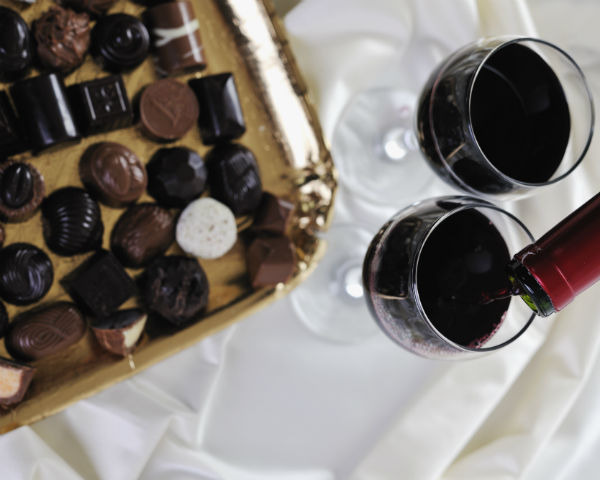Wine And Chocolate: Valentine's Day Guide
The topic of wine and chocolate pairing is surprisingly divisive, particularly when it comes to dry wines. Conventionalists and naysayers alike say it simply cannot be done successfully. Some take the semi-skeptic route, suggesting, "Well, I wouldn't do it, but if you really must..." But there are a few romantic renegades who acknowledge that, with the worlds of both wine and chocolate ever-expanding, and with chocolate at the height of its sophistication, there may be possibilities for this tricky pair. And, maybe more importantly, there are many people who just love these two indulgences and are happy for the delicious opportunity to experiment. As Oscar Wilde wrote, "I can resist everything except temptation."
Wine and Chocolate: Perfect Partners or Ill-Fated Lovers? (Slideshow)
Are chocolate and wine forever destined to be a rocky marriage, rife with astringent, acerbic clashes? On paper they make a great pair: Quality partners, potentially complex, fascinating. These two should have plenty to talk about over dinner. But the truth is, they make for finicky bedfellows, their chemistry often sizzling at first bite. Chocolate often overpowers wine, taking stage, acting the diva. The wine shrinks into the background, or worse, becomes a less attractive shadow of its former self. These two become bitter, making everyone at the dinner table entirely uncomfortable.
Do not despair, wine and chocolate lovers! With careful attention to detail, it is possible for these two delicious divas to harmonize. But matchmaking takes a little playfulness, and some down-and-dirty, geeky science-lab style investigation.
Traditional wisdom says that sweet food should be paired with even sweeter wine. For example, pairing a wedding cake with a Brut Champagne will make the already-dry Champagne taste even drier. A Moscato' d'Asti, however, could make for a lovely pairing. In the same way, sweet and fortified wines are much easier to pair with chocolate. With a wealth of these wines available on the market, why even try to introduce chocolate to dry wine? It's not uncommon for these two lovers to end up at the same table. On Valentine's Day, he brings home chocolate; she brings home a bottle of, you guessed it, red wine. Red wine is also likely to be what is left at the dinner table. A lot of people would prefer to finish it with dessert, rather than ordering a glass of port. And some people simply don't like sweet wine.
There are some general guidelines that will help budding matchmakers create a potentially fortuitous match, in which both parties retain their character while elevating one another. Ultimately, it is a matter of preference and taste. No one said marriage is easy.
• Only use good quality chocolate and good quality wine. Great pairings will never come of subpar products.
• Dry wines are often overpowered by chocolate, creating a sharp, acidic reaction.
• Distinct notes can compliment one another. Pair similarities (fruit and nut). Or trying playing with contrasts.
• Earthy, tannic, acidic, high alcohol wines need a soft and sweet (fruity) chocolate. One component (either the wine or the chocolate) needs to offer sweetness.
• Dark chocolate has a minimum of 35% cocoa and many have higher percentages than that. Higher percentages of cocoa have less added sugar. These chocolates can conflict with dry, high tannin reds.
• Potently flavored chocolates can be even trickier to pair. Chocolates with less exotic flavors are less complicated to pair. Start with the basics, like milk chocolate, and dark chocolate, and chocolate with nuts, before moving to more complex pairings.
• White Chocolate
Try: Ice Wine, Late Harvest Wines, Moscatos
• Milk Chocolate
Try: PX Sherry, Cream Sherry, Port, Madeira, Banyuls, Sweet German Wines
• Dark Chocolate
Try: Port, Ice Wines, Australian Muscats, Red Moscatos from Italy, Sweet Vin Santo, Amontillado Sherry, Madeira
